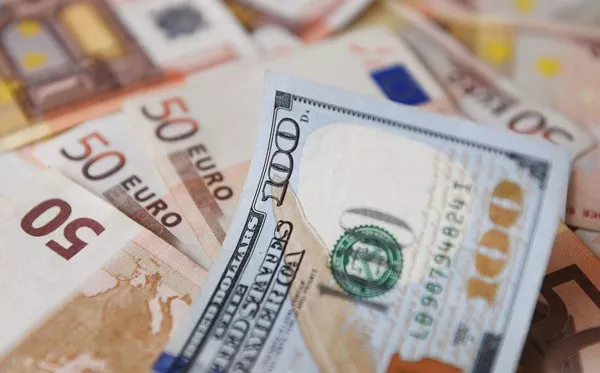In the wake of cautious comments from Federal Reserve Chair Jerome Powell, the U.S. dollar faced challenges in regaining ground on Monday. Powell’s remarks emphasized the anticipated slowing of the U.S. economy due to ongoing monetary policy measures, pushing the benchmark overnight interest rate into what he referred to as “restrictive territory.”
While Powell underscored the Fed’s readiness to tighten policy further if deemed necessary, traders appeared convinced that the rate-hike cycle had reached its conclusion. Market sentiment reflected a 60% probability of a rate cut by the March meeting, a notable shift from the 21% probability just over a week ago, as indicated by the CME’s FedWatch tool.
The U.S. dollar index, which tracks the currency against six major counterparts, showed a marginal uptick to 103.33 in the Asian afternoon, remaining close to Friday’s closing levels.
Kyle Rodda, Senior Financial Market Analyst at Capital.com, noted that U.S. data remains the primary driver for G10 currencies, identifying non-farm payrolls as the most significant risk event of the week. The highly anticipated November jobs report, scheduled for release on Friday, is poised to influence the outlook for U.S. interest rates.
Rodda highlighted the “pricing out of U.S. economic exceptionalism” and the unwinding of stretched long positions in the U.S. dollar as contributing factors to the market dynamics. Depending on U.S. economic data releases, dollar pairs could continue to experience fluctuations.
Against the Japanese yen, the dollar rebounded to $146.80 after an initial dip to $146.24, marking the yen’s highest level against the greenback since September 11. The Australian dollar reached a four-month high against the U.S. dollar at $0.669 before settling at $0.6655 in the Asian afternoon. Meanwhile, the kiwi saw a slight decline of more than 0.2% to $0.61940 after hitting $0.6222, its strongest level since late July.
Sterling, having reached a three-month high of $1.2733 against the greenback last week, maintained its position around $1.26745 on Monday.
Currency markets could witness additional volatility this week due to speeches from European Central Bank (ECB) officials, including a speech by ECB President Christine Lagarde. Despite last week’s Eurozone CPI report, indicating a 2.4% fall in inflation in November, analysts, including Carol Kong, a currency strategist at Commonwealth Bank of Australia, remain skeptical about immediate ECB rate cuts due to the still-tight Eurozone labor market.
The euro slipped 0.13% on Monday, reaching $1.08685, following last week’s dip to $1.0829 prompted by concerns over Eurozone inflation.
In the realm of cryptocurrencies, Bitcoin reclaimed the spotlight by surpassing the $40,000 level for the first time in nearly a year and a half. The surge is attributed to optimism surrounding potential regulatory approval for stock-market traded Bitcoin funds in the United States. Bitcoin reached $41,425, its highest level since April 2022. The crypto market continues to be a focal point for investors amid evolving regulatory dynamics and increasing institutional interest.


